Many people think of liquid paints, such as urethane or acrylic lacquer paints. In the industrial world, however, dry paints without solvents, or powder paints, are more common. We will focus on powder coatings, which have the advantage of thicker coatings that are resistant to impact and difficult to peel off but require equipment such as electrostatic guns and dryers.
- Powder coatings that adhere to finely powdered paints with static electricity in powder form
- Thick, impact-resistant paint film that does not peel easily is ideal for frame and wheel painting.
Powder coatings that adhere to finely powdered paints with static electricity in powder form
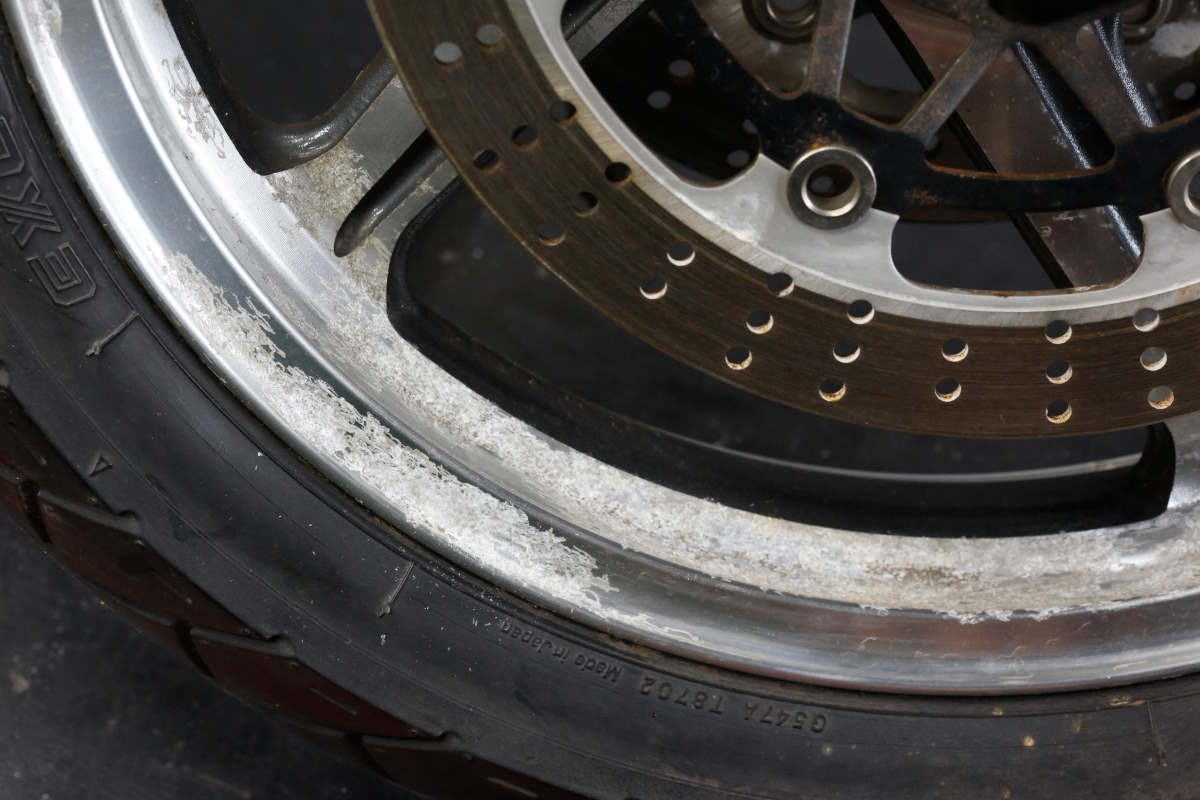

Exterior parts are often waxed and cared for, but the frame and wheels are not cared for, and rust and corrosion occur as the paint and coating deteriorate due to outdoor storage, long-term neglect, and aging.
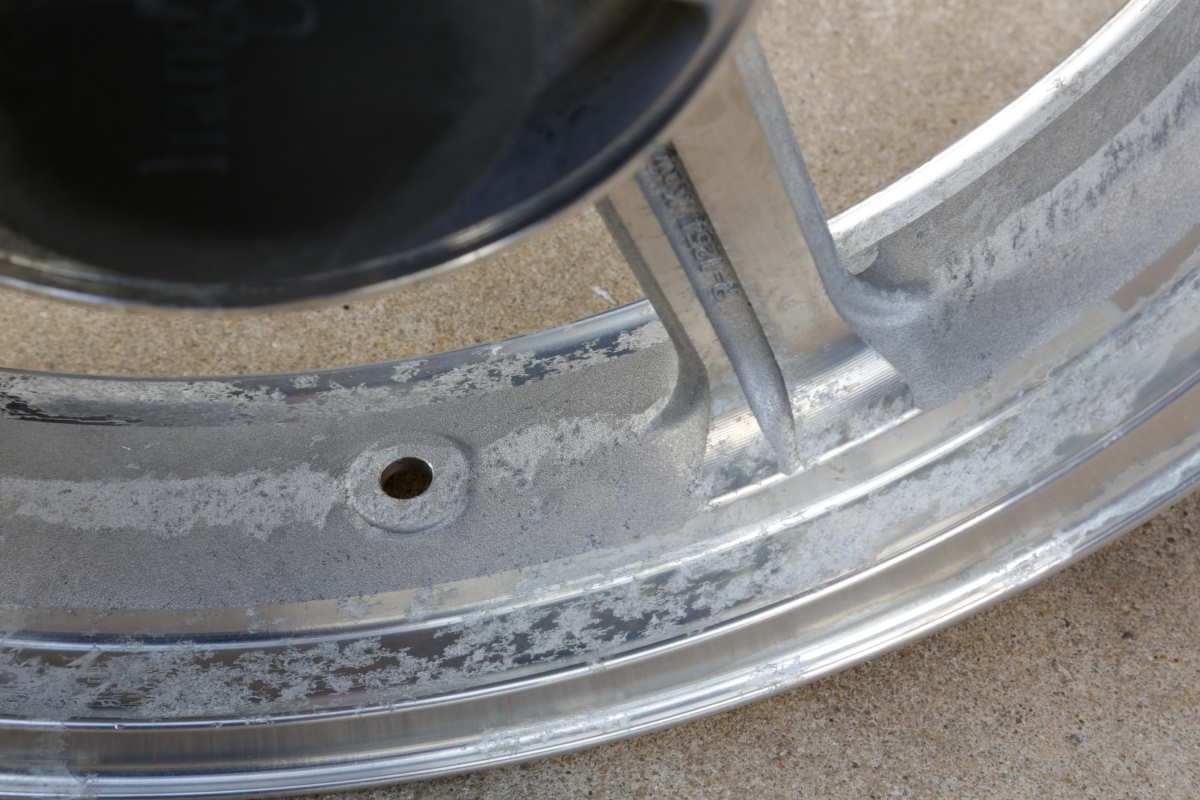

Even cast aluminum wheels that look unpainted always have a surface treatment. When corrosion progresses under the surface, the wheel becomes speckled as shown here. The only way to fix this is to polish or repaint the wheel.
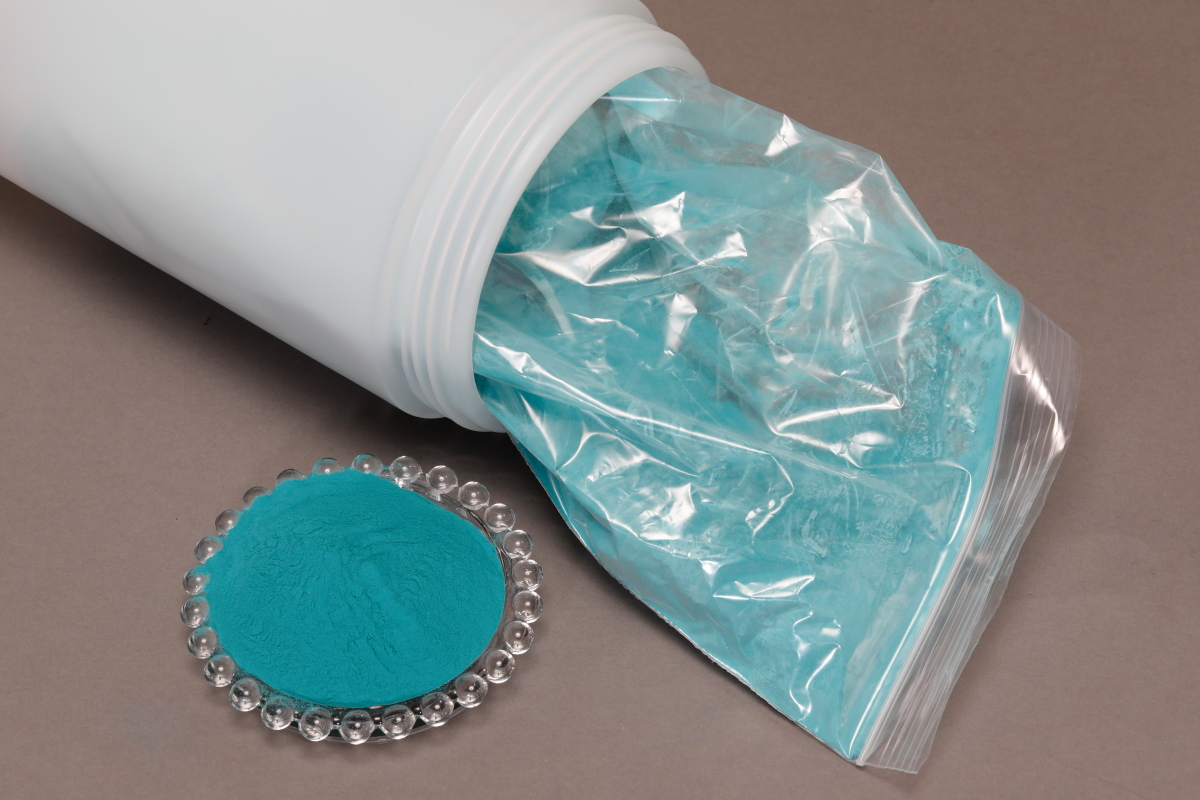

The powder coating used in powder coating is a very fine powder consisting of a resin component and a hardener, and is sprayed onto the surface of metal parts in this state. It is not dissolved in a solvent before painting and sprayed with a spray gun.
Solvent paint is a solution of resin, solvent, and pigment that is sprayed on parts, and the resin composition becomes the paint film after the solvent has volatilized. Although this may sound difficult, it is easy to understand if we say that canned sprays sold at motorcycle accessory stores and home centers are solvent paints. Urethane paints painted with a spray gun are also solvent paints.
Powder paint, on the other hand, is painted in a solid state, a fine, silky powder like flour. Powder paint is dissolved in a solvent such as thinner and sprayed with a spray gun. The painting method using powder paint is called powder coating and has long been commonly used for industrial products. To explain the painting mechanism, the main feature of this method is that the powder clings to the underside of parts with complex shapes by utilizing the static electricity generated between the fine powder paint, which is given a positive charge by a special electrostatic gun, and the part to which a ground wire is attached.
The major difference is that powder coatings use static electricity, whereas solvent paints are sprayed by air pressure, the gas pressure inside a can for canned sprays, or air pressure from an air compressor for a spray gun. Compressed air from an air compressor is used to make the electrostatically charged powder paint cling to the part, but the pressure is so low that the powder paint sprayed from the gun slowly ejects in a mist and adheres to the part as it flutters about.
When painting the backside of a pipe with solvent paint, one has to work carefully to make sure that there is no residue, but with powder coating that uses static electricity, the paint adheres to the metal parts as if it has its own will, so there is less worry about leaving residue. It also has the advantage of not emitting an odor because it does not use solvents or thinners.
Thick, impact-resistant paint film that does not peel easily is ideal for frame and wheel painting.
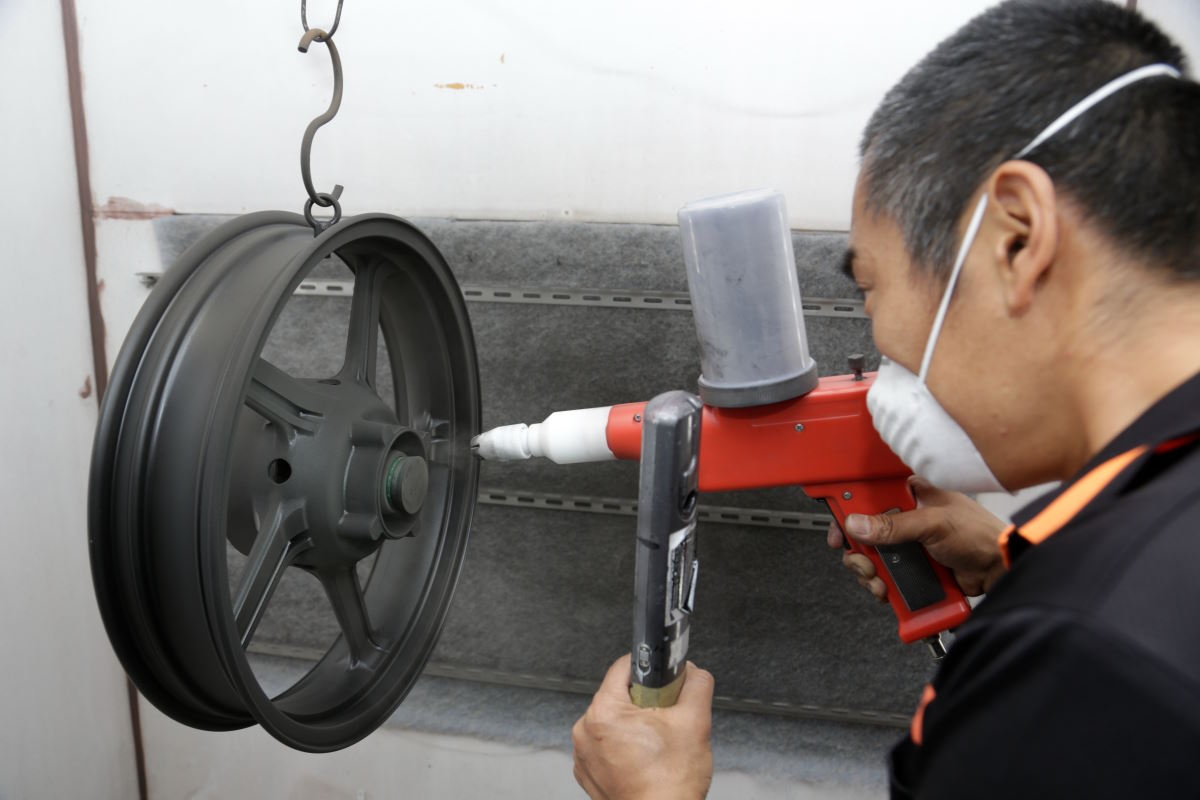

The red paint gun is a corona electrostatic gun of the POWDY MasterPro system sold by Kerbec. Powder paint in the cup at the top of the unit is spurted out by an internal electrostatic generator with a static charge of 100,000 volts and adheres to grounded parts.
Before baking and drying at 180°C, the powder paint just adheres like dust, so it is easily removed by touching it with fingers or blowing air.
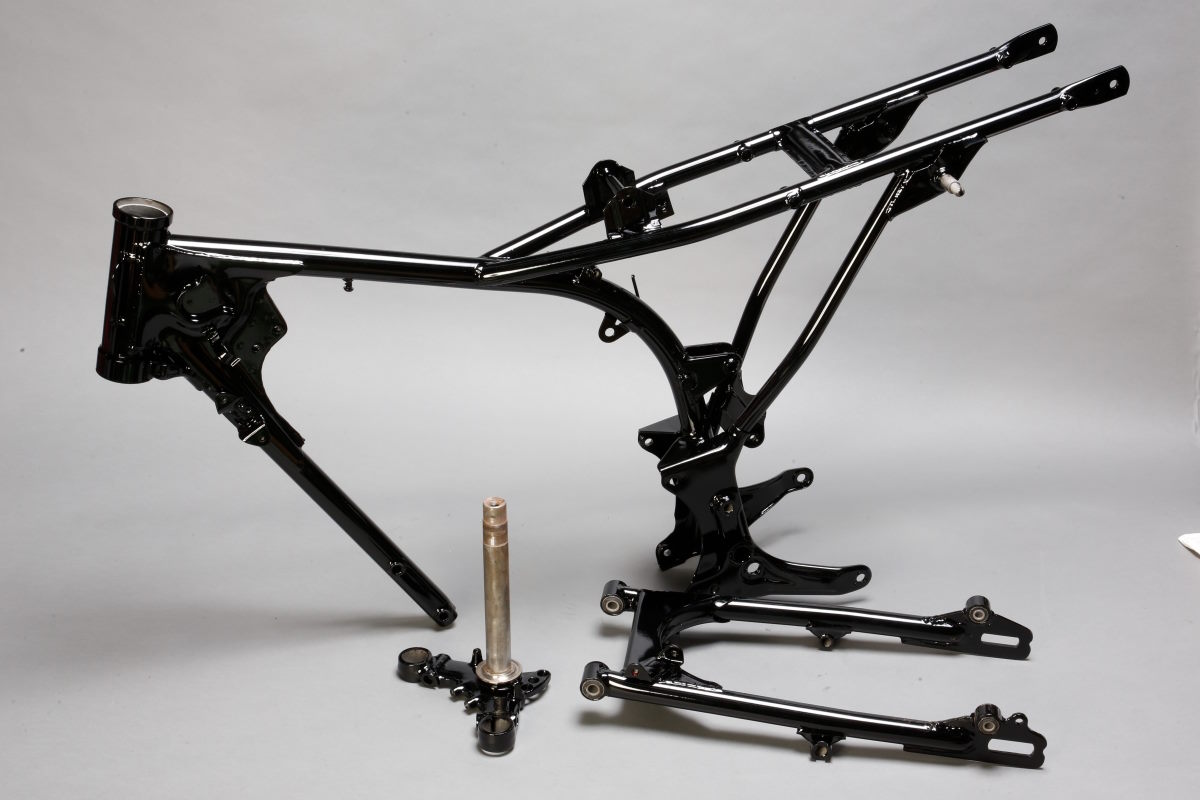

Baking and drying at a high temperature of 180°C melt the resin and hardener and mix them evenly to form a coating film. Solvent paints become thinner when the solvent volatilizes after spraying, but powder paints do not have a solvent, so their volume does not decrease, and the thickness of the paint film is 4 to 5 times that of solvent paints. Epoxy resins, which are commonly used in powder coatings, also have very good adhesion to metal, so primers, surfacers, and other primer coats are not necessary.
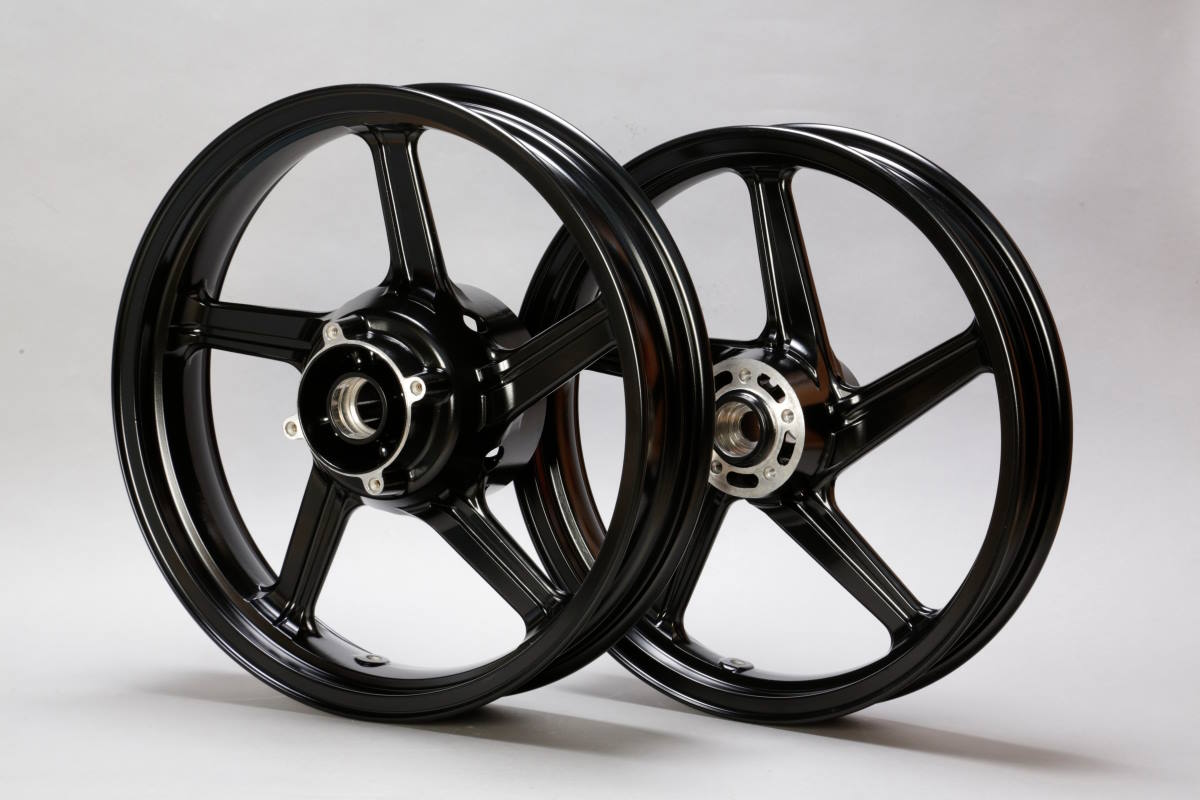

Wheels with advanced corrosion are sandblasted to remove old paint and corrosion, and then powder coated with a semi-gloss black color to give a completely new impression. With solvent paint, it is common to spray surfacer after sandblasting, add sandpaper, and then paint with urethane paint. Powder coating, however, requires only one process, and the power of static electricity allows even wheels with complex shapes to be finished without leaving any paint residue.
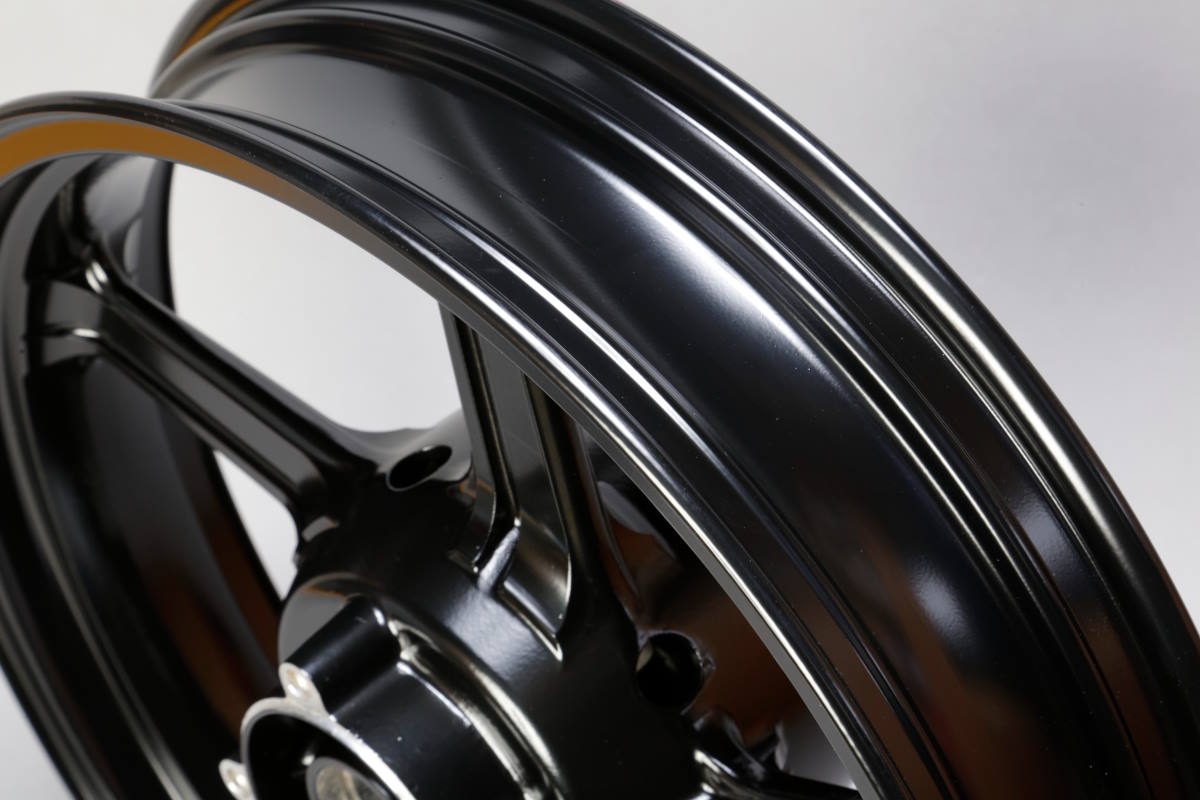

Powder or solvent coating tends to thin the coating film in the corners and edges, but powder coating has the advantage of being thick and tough, making it ideal for wheel coating. It does not peel off easily even if the rim is scraped with a tire changer or tire lever.
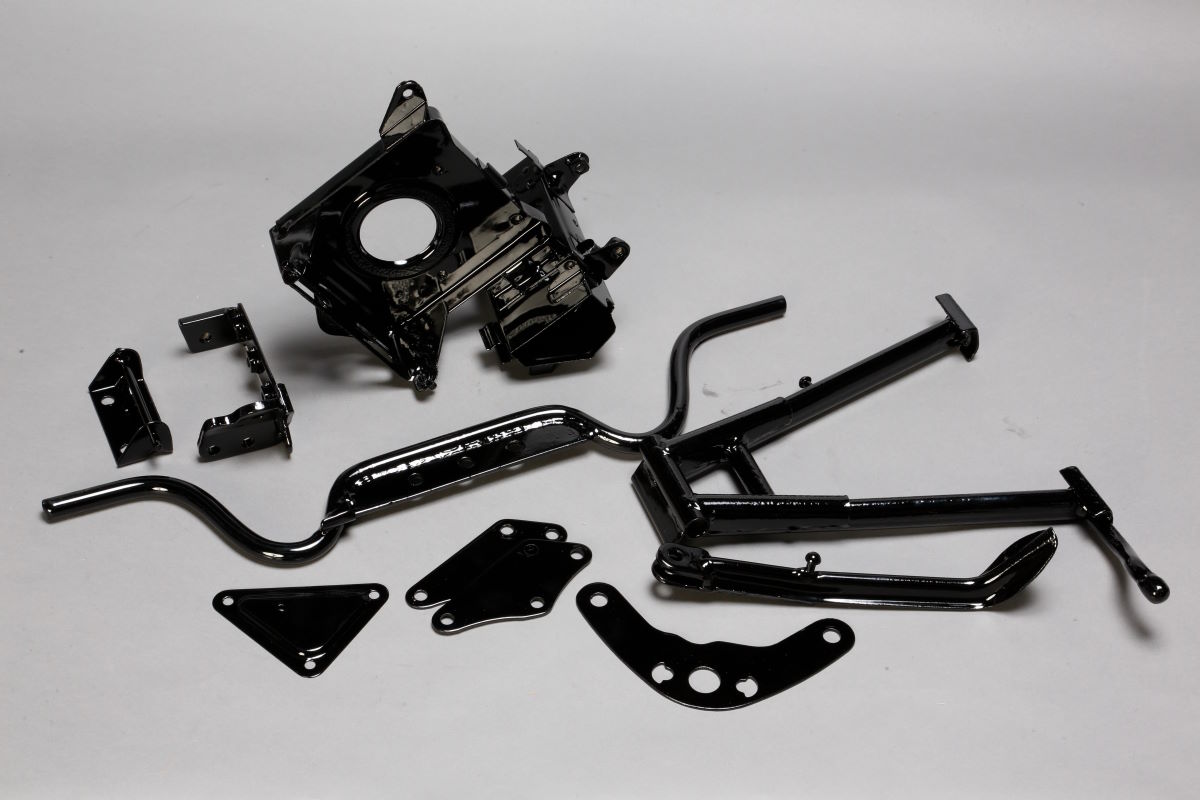

Small items on the underside of out-of-print and old cars, such as stands, steps, and engine hangers, also tend to rust, and yet they are important points that affect the overall impression of the car. Repainting with a powder coat not only improves their appearance but also keeps them in good condition for a long period of time due to their high durability.
The powder is a mixture of resin and hardener components in a silky powder like cocoa powder or flour, and when heated at 180°C, the two react to form a smooth coating film, which hardens upon returning to room temperature. The cured coating film is characterized by its “thickness,” “impact resistance,” and “peeling resistance. Resin components in paints can be classified into four categories: epoxy, polyester, epoxy polyester, and acrylic. Each material has different characteristics in terms of adhesion to metal, the thickness of the paint film, design, weather resistance, and transparency of the paint film.
Epoxy resins feature high adhesion and durability to metals and thick coating films.
On the other hand, its weakness is its low durability against ultraviolet rays. Polyester resins are colorful, highly designable, and UV-resistant, making them suitable for outdoor use. Epoxy polyester resin combines the adhesion and thickness of epoxy resin with the features of weather-resistant polyester resin, while acrylic resin has the advantage of high clear transparency.
Motorcycle parts are suitable for painting skeletal parts such as frames and wheels.
Urethane and acrylic coatings may crack or chip when exposed to bouncing pebbles while riding, but powder coatings with a thicker film do not peel off easily. The powder coat is thick and does not peel off easily. It is not affected by tightening the engine mount bolts to the frame or catching the tire lever on the edge of the rim when changing tires.
On the other hand, since the coating is baked and dried at 180°C, materials that change at lower temperatures cannot be painted. Also, since static electricity is used, materials such as resin, glass, wood, and other insulators cannot be coated. Another advantage of powder coating is that it is easy to redo the work.
Powder-coated film baked at 180°C is extremely strong, but before baking, it is in powder form and can be easily blown off by simply blowing air.